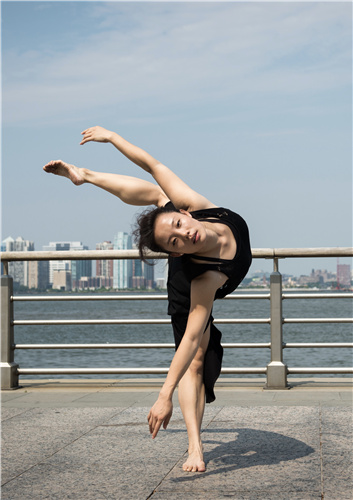Dance artist helps ethnic culture reach a broader audience
By Li Wenrui | chinadaily.com.cn | Updated: 2021-03-25 10:56
Cultural exchanges take many forms. And dance, a language that can be appreciated throughout the world, has helped Chinese ethnic culture reach a broader audience, with the efforts of artists like Zhao Xi.
Zhao received her MFA from New York University's Tisch Department of Dance and her MA in dance choreography at the School of Dance, Minzu University of China. She has worked as a dance educator in higher educational institutions for over 12 years and as an independent choreographer working internationally with companies and artists.
She also is the founder and artistic director of Y Art Studio and the initiator and artistic director of The NEW-Beijing New Dance Festival, an international festival featuring contemporary dance in China.
Zhao discovered her passion for dance at a very early age.
"I started learning ballroom dancing at nine and won the national championship for Latin dancing at eleven," Zhao recalled. "As a child, I could practice all day long – wearing out one pair of dancing shoes every day. I always felt joy while I was dancing to the music."
Coming from an extensive training background and being able to travel and perform in the US, Australia, Europe, Hong Kong and Macao, the artist forms a unique perspective about modernity and traditionality.
"Choreography goes in line with cultural aesthetics. For example, Chinese modern dancing is particularly good at highlighting techniques. Most Chinese dancers, trained from childhood, possess great physical flexibility and stamina. So we can often see excellent skills and techniques in dance, while US modern dancing is more diverse, reflecting the concept of the choreographer."

Over the years, Zhao has created many dance dramas. She pushes the boundaries of traditional Chinese essence, such as Peking Opera and Shaoxing Opera, by infusing elements of folk dancing, modern dancing and ballroom dancing.
"I don't believe there is a 'right or wrong' in artistic creation. The crucial component is honesty. By understanding our tradition, we know our origin. Nowadays, more and more choreographers experiment with crossovers by mixing different media, styles to discuss our future."
Although through the effort of Chinese dance artists, Chinese folk dance has been promoted and introduced to many major cities around the world, it still remains in a small circle.
Currently working at the Department of Dance of Webster University in St. Louis in the US, Zhao wants more people to appreciate this beautiful heritage.
"The majority of students in my school never visit China, nor see any Chinese folk dance performances," she said. "I really hope Chinese traditional culture will shine on a much larger stage."
Now she is teaching Tibetan folk dancing to her students – a way to help people experience more diverse Chinese ethnic culture.
"Dancing is a form of body language shared by all human beings. We can feel each other's joy and sorrow through dancing," she said.
Zhao thinks cultural exchange is playing an even bigger role now in the world.
"It is an opportunity for people from various backgrounds to converse and understand each other. We express ourselves via culture and art, and we establish respect and friendship by communicating with others," she said.
Video by Maggi Dueker
Performing students are from the Department of Dance, Webster University
























